
Golf course provides unique experience
WAWONA, Calif. – As I passed it 45 minutes into my drive from the village in Yosemite Valley, the sign read “Wawona — Elevation: 4000.” Around the next bend, the first tee of Wawona Golf Course came into view.
I pulled into the parking lot across the street and walked up the hill to the front door of the Wawona Hotel. I had a noon appointment with Kim Porter, who I knew only as someone familiar with the history and operation of the hotel’s golf course.
Five minutes later, I was on the way back down the hill towards the first tee, riding shotgun in the greenskeeper’s cart next to Porter. He gripped the steering wheel with weathered hands that betrayed his two decades of experience maintaining the course.
“Golfing here is really nice — if you’re willing to deal with the conditions of the turn of the century,” he said.
The nine-hole layout of Wawona Golf Course first opened in 1918, before the federal government had established Yosemite National Park. That early-20th-century beginning predates the drainage systems that allow modern golf courses to maintain pristine conditions.
In the isolation of Yosemite, there is not a whole lot of competition for water, leaving the course free from the droughts that have plagued California in recent years. The National Park Service keeps 1.9 million gallons of water in reserve for fire suppression, but that still leaves plenty for Porter to keep Wawona’s fairways and greens just that color.
“There hasn’t been a year where there hasn’t been some kind of [water] restriction,” he said. “But as the river gets lower later in the year, the government takes less.”
|
At right, the first hole of course offers a scenic view of Wawona Point. Next, the pro shop in the hotel. At the fifth hole, golfers use a periscope to see the landing area. Gopher tracks are the only blemish on the fairways. A cabin near the seventh green was a slaughterhouse until 1928 (Photos by Zander Kean). |
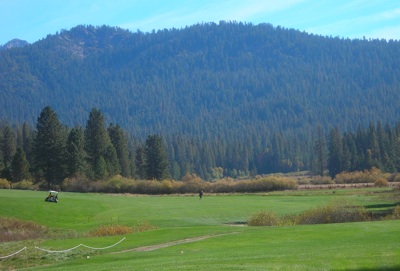 |
Wawona’s first hole is a short par-5, beginning with a wide-open tee shot with the mountain tree line in full view. The fairway then bends left and uphill toward a small green. As we drove toward the 223-yard, par-3 second hole, Porter pointed out the tightly grouped dirt spots dug out by any greenskeeper’s greatest nemesis – native gophers.
As an Audubon Cooperative Sanctuary, the course must be kept up without the use of pesticides and other chemicals in order to protect the natural habitat of native plants and animals. This protection allows squirrels, deer, and the occasional bear to wander onto Wawona’s fairways. Beavers build dams behind the second green, and spotted owls can be found late in the day.
But on the other hand, gophers are free to dig up the fairways and greens.
“We can’t kill them, obviously,” Porter said. “So really all we can do is fill [the holes] in as soon as they dig ‘em.”
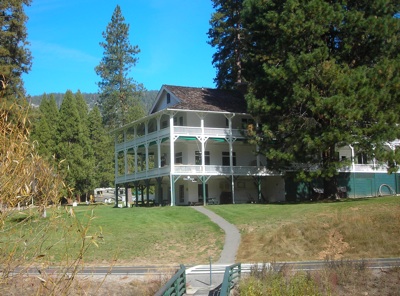 As we passed by the smooth doglegs of the third and fourth holes — the former a par-5 and the latter a par-4 – gopher tracks showed up sparingly.
As we passed by the smooth doglegs of the third and fourth holes — the former a par-5 and the latter a par-4 – gopher tracks showed up sparingly.
Porter said that for the most part, visitors to the course don’t notice the dirt spots. Even if they do, they don’t complain.
“People are pretty understanding of what we have to work with out here,” he said.
The course is filled with relics of its nearly century-old history. Nowhere is this more obvious than the par-4 fifth hole, where a steep upslope and a massive tree along the left side blinds golfers to the ball’s landing area.
In addition to the degree of difficulty, this creates a safety hazard for those in the fairway with a group set to tee off behind them.
Fortunately, a slender periscope sits just behind the tee box, allowing golfers to make sure the area ahead is clear.
The only drawback of this feature is that its effectiveness stops once the golfer steps up to the tee, as a solid tee shot will disappear from view well before landing on the fairway ahead.
On eight of Wawona’s nine holes, the only difference between the blue and white tee markers is up to 20 yards of distance. The par-3 sixth hole is the lone exception, as the white tees sit 30 yards closer than the blues, at an angle that takes a safe landing area to the left of the green out of play.
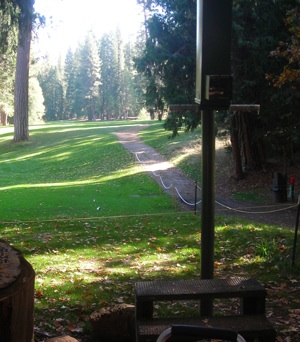 “The course was actually originally advertised as having 18 holes because of the different tee boxes,” Porter said. “But really it’s a nine-hole course with a few choices on certain holes.”
“The course was actually originally advertised as having 18 holes because of the different tee boxes,” Porter said. “But really it’s a nine-hole course with a few choices on certain holes.”
The seventh hole rolls down the same slope that the fifth goes up. At the bottom and to the left of the green, the thick forest opens up to reveal a wood cabin that is a relic from the course’s earliest days.
An informative signpost details the cabin’s history as a slaughterhouse that allowed the Washburn family to operate the hotel self-sufficiently until the building became obsolete in 1928. Though it has not been used since, the building still stands as it was left more than 80 years before.
“We use the wood from fallen trees up in the hotel [to light the] fireplaces and things like that,” Porter said. “But we don’t clear out anything else, which is why [the slaughterhouse] is still here.”
Past the par-3 eighth – the course’s easiest – Wawona’s finishing hole gives golfers another chance to enjoy the majestic view of Wawona Point.
My ride-along with Porter complete, I decided to play a round, experiencing the course the way it was originally meant. Despite the elevation, the early afternoon temperature sat in the high 60s and made my jeans and a light t-shirt the perfect attire.
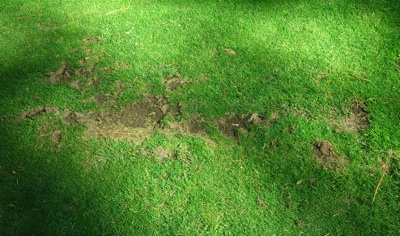 With a set of rental clubs, I opened my round bogey-bogey-bogey. As a casual golfer who plays about once a month and has never had his handicap calculated, Wawona offered a challenge – but not so much of one as to distract me from appreciating the perfect late-October weather and the park’s natural beauty.
With a set of rental clubs, I opened my round bogey-bogey-bogey. As a casual golfer who plays about once a month and has never had his handicap calculated, Wawona offered a challenge – but not so much of one as to distract me from appreciating the perfect late-October weather and the park’s natural beauty.
Despite the ideal conditions, the golfing crowd was sparse. One couple teed off immediately after I did, but with open fairways in front of me I never had to wait on any hole.
“This is basically the perfect time of year to come up here,” Porter said. “The weather usually doesn’t get much colder for another few weeks and, since we’re about to close for the season, it’s not that crowded.”
I narrowly missed hitting that big tree on the uphill fifth and spent a few minutes looking for my ball before finding it along the left edge of the fairway.
On the seventh, I slammed a 5-iron approach hard enough to roll down the hill and 10 yards past the green, scrambling from the woods for a double-bogey 6.
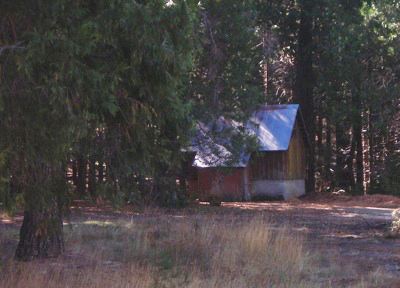
And on the final hole, I flopped my third shot to within 15 feet and two-putted for a finishing bogey. I carded a satisfying 47, good enough with an unfamiliar set of clubs and no glove. But beyond those 47 strokes, I got a chance to play a course unlike any I had played before.
Wawona is now closed for the season. But when the snow is melted and the water reserves are filled next spring, Porter will have his course ready.
If You Go…
- Located adjacent to the Wawona Hotel, 29 miles from Yosemite Valley via Calif. Highway 41.
- Open daily mid-March to early November — exact dates depend on weather
- Weekday greens fees: $21.50 for 9 holes, $36 for 18 holes.
- Weekend greens fees: $25.50 for 9 holes, $41.50 for 18 holes.
- Electric cart rental: $19.50 for 9 holes, $28 for 18 holes.
- Pull cart rental: $7 for 9 holes, $10 for 18 holes.
- Club rental: $17.50 for 9 holes, $22.50 for 18 holes.
- Tee times not required.
- The Wawona Golf Shop can be reached at 209-375-6572.

Comments are Closed